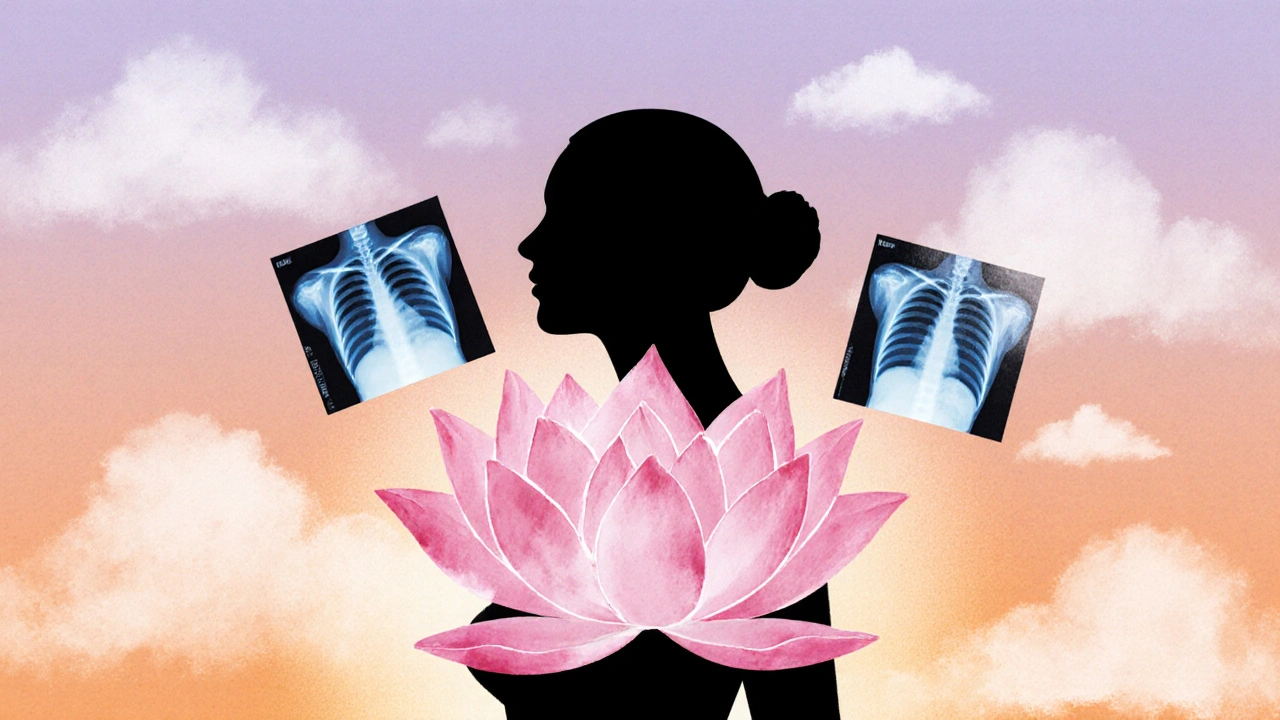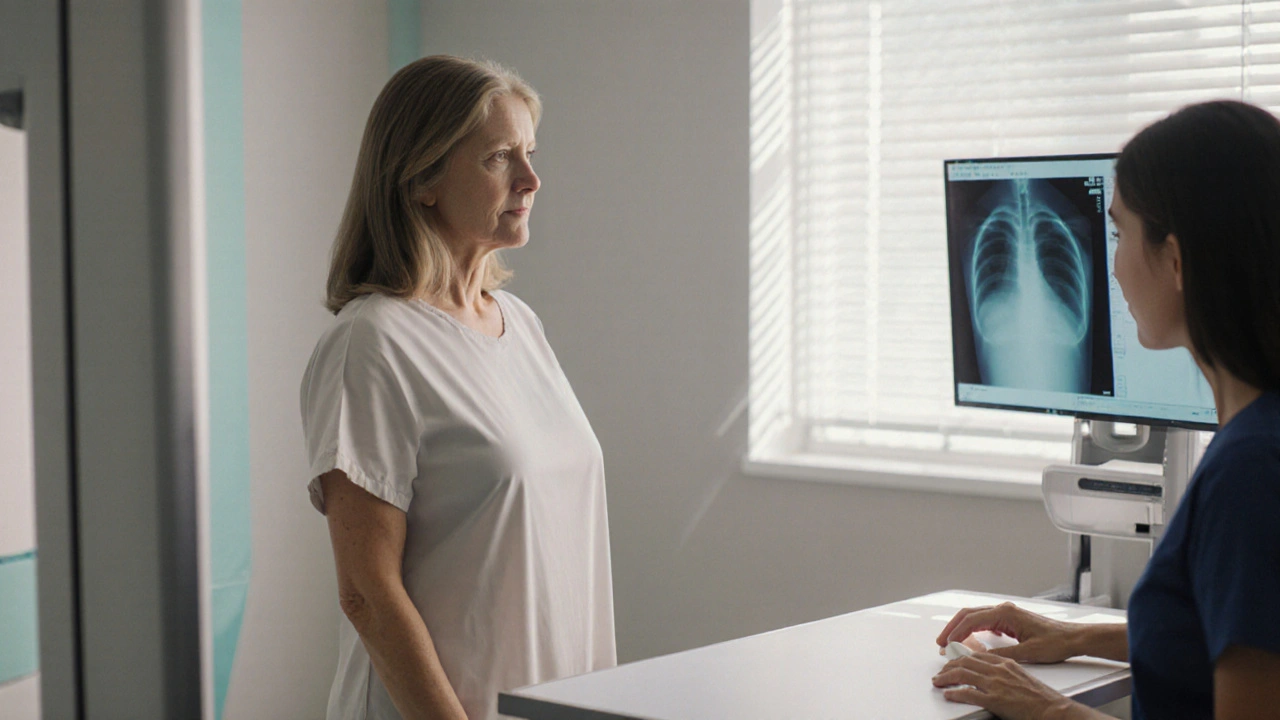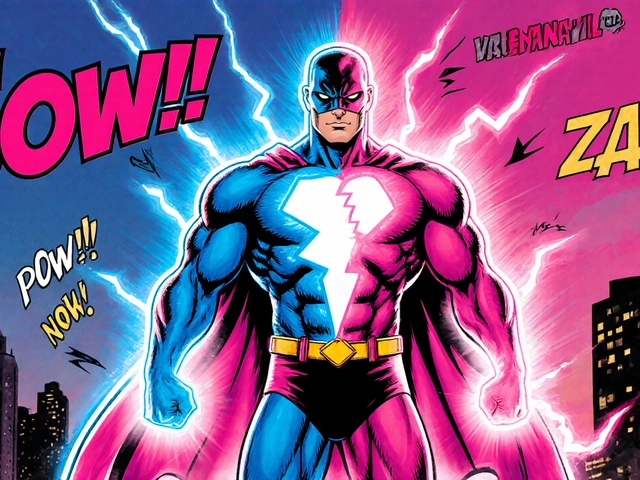Mammogram Eligibility Checker
Enter your details below to see if you're eligible for annual mammogram screenings:
Note: This tool provides general guidance. Consult a healthcare provider for personalized advice.
TL;DR
- Most breast cancers are curable when caught early.
- Year‑old annual mammogram screenings catch tumors up to 2years before they’re felt.
- Digital and 3‑D mammography raise detection rates by 5‑15%.
- Side effects are minor - the biggest risk is a false alarm, not radiation.
- Follow the guideline: start at 40, screen every 12months unless advised otherwise.
When it comes to breast health, the phrase “early detection saves lives” isn’t fluff - it’s backed by decades of data. An Mammogram is a low‑dose X‑ray image of the breast used to spot abnormalities before they can be felt. Getting one every year turns a random check‑up into a reliable safety net.
Why an Annual Schedule Beats a One‑Off Check
Breast tissue changes over time. A lump that’s invisible at age 45 might become detectable a year later. The American Cancer Society (ACS) recommends a steady cadence because:
- Growth rate matters. Many aggressive cancers double in size within 6‑12months. Annual imaging catches them while they’re still tiny.
- Statistical edge. Studies from the National Cancer Institute show a 20‑30% drop in mortality for women screened yearly versus biennially.
- Pattern recognition. Radiologists compare each year’s images, spotting subtle shifts that would be missed in a single snapshot.
Who Should Schedule the Test?
Guidelines vary slightly, but the core rule is simple: start at age 40 and keep the 12‑month rhythm unless a doctor says otherwise. Exceptions include:
- Family history of early‑onset breast cancer - you might begin at 30.
- High‑risk genetic mutations (BRCA1/2) - annual screening plus MRI may be advised.
- Previous breast lesions - more frequent imaging may be needed.
For men, routine mammograms aren’t standard, but anyone with a palpable lump or high‑risk factors should talk to a Radiology specialista medical field focused on imaging diagnostics right away.
What Happens During the Appointment?
The process is quick and designed for comfort:
- You’ll change into a gown and stand in front of a padded plate.
- The technologist gently compresses each breast - the pressure feels odd but is crucial for clear images.
- Typical exposure lasts less than a minute per breast; the total scan takes about 20minutes.
Modern centers use Digital Mammography an electronic system that converts X‑rays to high‑resolution digital images, which speeds up reading and allows for computer‑aided detection (CAD).
Benefits Backed by Numbers
Here are the hard facts that make the yearly habit worthwhile:
- 5‑year survival rates exceed 99% for cancers detected at <1cm, compared to ~80% for tumors found after they’re palpable.
- Digital mammography lifts detection of invasive cancers by about 7% versus older film methods.
- 3‑D Tomosynthesis a layered X‑ray technique that creates a 3‑dimensional view of the breast improves cancer finding rates by 15% in dense‑breasted women.
- False‑positive recalls affect roughly 10% of screened women, but the majority resolve after a quick additional view - the trade‑off is still a net life‑saving benefit.

Risks, Myths, and the Real Deal
Fear of radiation is common, yet the dose from a single mammogram is about 0.4mSv - less than a day’s natural background exposure. Long‑term studies show no increase in cancer risk from yearly screens.
Another myth: “If I feel fine, I don’t need a mammogram.” Feelings are unreliable; up to 30% of cancers are discovered in women with no symptoms.
Lastly, the “pain” factor. Compression can be uncomfortable, but most women rate it a 3‑4 on a 10‑point pain scale. Proper technique keeps it tolerable.
Choosing the Right Facility
Not all imaging centers are equal. Look for these signs of quality:
- Board‑certified radiologists with a breast‑imaging fellowship.
- Accreditation by the American College of Radiology (ACR).
- Availability of both Digital Mammography and 3‑D Tomosynthesis - the combo offers the highest detection odds.
- Transparent reporting: you should receive a written summary within a week.
Preparing for Your Scan
- Schedule when your menstrual cycle is at its lowest (usually a week after period ends) to reduce breast density.
- Avoid deodorant, lotions, or powders on the day of the exam - they can appear as artefacts on the image.
- Wear a two‑piece outfit for easy gown changes.
- Bring a list of any recent breast procedures or implants - the technologist needs this info.
Comparison: Digital Mammography vs 3‑D Tomosynthesis
| Feature | Digital Mammography | 3‑D Tomosynthesis |
|---|---|---|
| Image type | Flat 2‑D image | Layered 3‑D reconstruction |
| Detection boost (dense breasts) | ~7% increase | ~15% increase |
| Radiation dose per exam | 0.4mSv | 0.5mSv (slightly higher) |
| Average cost (US) | $120‑$150 | $200‑$250 |
| Recall rate | ~10% | ~5% |
When to Talk to Your Doctor
If you notice any of the following, schedule an appointment right away - you don’t have to wait for the next annual slot:
- New lump or thickening.
- Skin changes (dimpling, redness).
- Nipple discharge that isn’t milk.
- Persistent breast pain not linked to menstrual cycle.
These signs can appear with benign conditions, but a quick work‑up rules out cancer early.
Frequently Asked Questions
How often should I get a mammogram?
Most health organizations, including the American Cancer Society, recommend an annual mammogram starting at age 40. High‑risk individuals may need earlier or more frequent screening.
Is a mammogram painful?
Compression can feel uncomfortable for a few seconds, but the pain level is usually low. Technologists adjust pressure to balance image quality and comfort.
Can a mammogram detect all breast cancers?
Mammograms catch about 85‑90% of invasive cancers, especially when combined with 3‑D tomosynthesis. However, some cancers in very dense tissue may need supplemental ultrasound or MRI.
What’s the radiation risk?
A single mammogram delivers roughly 0.4mSv - less than the natural background radiation you receive in a day. Long‑term studies show no increase in cancer risk from annual screening.
Do I need to fast or avoid anything before the test?
No fasting is required. Skip deodorant, lotions, or powder on the day of the exam, and wear a two‑piece outfit for easy changing.
Bottom line: the yearly mammogram isn’t a chore; it’s a proven, low‑cost tool that turns a potential tragedy into a treatable story. Mark your calendar, choose a certified centre, and let the images do the early‑detection work for you.






Snehal Suhane
September 30, 2025 AT 20:16Oh, because nothing screams “I care about my health” like paying for a yearly X‑ray, right? If you’re not into that, just keep ignoring the stats.
virginia sancho
October 1, 2025 AT 19:37hey everyone, just a quick heads up – the guide says start at 40 and keep it yearly. it’s pretty straightforward and can really save lives, so don’t put it off.
Namit Kumar
October 2, 2025 AT 18:59From a national perspective, early detection aligns with our public health goals 😊. Indian guidelines also recommend regular screenings and the data supports that approach.
Sam Rail
October 3, 2025 AT 18:21Sounds good.
Taryn Thompson
October 4, 2025 AT 17:42While the evidence supporting annual mammography is robust, it is essential to balance clinical recommendations with individual risk factors. In practice, clinicians often tailor screening intervals, yet the baseline of yearly imaging after age 40 remains a solid foundation for most patients.
Lisa Lower
October 5, 2025 AT 17:04Annual mammograms are the unsung heroes of preventive health. They catch cancers before anyone even feels a lump. The data is crystal clear. Early detection drives survival rates through the roof. You don't need a PhD to understand that a simple yearly scan can keep you out of the hospital. Think of it as an insurance policy that actually works. The technology has evolved from film to digital to 3‑D tomosynthesis. Each upgrade adds another layer of precision. The radiation dose is minuscule compared to the benefit. False positives happen but they are far less scary than a missed diagnosis. Guidelines recommend starting at 40 unless you have a family history. For those with BRCA mutations the frequency jumps to every six months with added MRI. Even if you feel fine the images can reveal microcalcifications that signal trouble. Radiologists compare year‑to‑year images to spot subtle changes the human eye would miss. The psychological peace of mind after a clean scan is priceless.
Justin Park
October 6, 2025 AT 16:26Life is a series of moments, and a mammogram is just one snapshot 🌟. It reminds us that the future is built on the choices we make today, and health is the greatest investment.
Michele Radford
October 7, 2025 AT 15:47If you can afford a simple screening, it is morally incumbent to do so. Ignoring the evidence while claiming personal freedom endangers not only yourself but also the community that relies on collective responsibility.
Mangal DUTT Sharma
October 8, 2025 AT 15:09I completely understand the fear around medical tests, but know that many women share this anxiety 😌. The support of a caring provider and the reassurance of a clean result can turn that fear into empowerment.
Gracee Taylor
October 9, 2025 AT 14:31Different perspectives on screening frequency exist, yet the core goal remains the same: early detection. By sharing reliable information we can help each other make informed choices without judgment.
Jonathan Alvarenga
October 10, 2025 AT 13:52Honestly, the push for annual mammograms feels like a profit‑driven agenda more than a pure health initiative. The industry benefits from repeat visits, and the average woman is bombarded with marketing that equates screening with bravery. While early detection is undeniably valuable, the one‑size‑fits‑all recommendation ignores nuanced risk profiles. Women with low risk might endure unnecessary anxiety and false alarms, which can lead to invasive follow‑ups. Moreover, the emphasis on yearly imaging can distract from lifestyle interventions that reduce cancer risk. It would be wiser for guidelines to prioritize personalized schedules based on genetics and family history. Until then, we should remain skeptical of blanket mandates.
James McCracken
October 11, 2025 AT 13:14One might argue that the very notion of “personalized schedules” is a romantic illusion in a healthcare system constrained by bureaucracy. The elegance of a uniform recommendation lies in its simplicity, yet it also blinds us to the deeper complexities of oncologic risk.
Suzanne Podany
October 12, 2025 AT 12:36Remember that access to screening can vary, and it’s important to advocate for equitable resources. Community outreach programs and subsidized clinics make a real difference, so let’s support those initiatives together.
Jennifer Brenko
October 13, 2025 AT 11:57As a citizen who values the strength of our nation’s health infrastructure, I assert that government‑backed screening programs are essential. They not only protect individual lives but also bolster the collective resilience of our society.
Michael Weber
October 14, 2025 AT 11:19The quiet dread that lingers after a missed diagnosis is a reminder of how fragile our existence truly is. A simple mammogram can pierce that darkness, offering a sliver of hope in an otherwise unforgiving world.